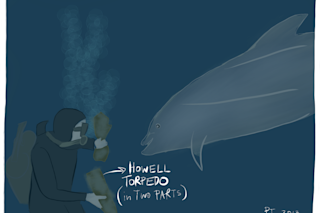Dolphins have uncovered a marvel of naval history: the 125-year-old Howell torpedo, the first torpedo that could be released into the ocean and follow a track to smash a target without leaving a wake. Only 50 were made between 1870 and 1889 by a Rhode Island company before the competition copied the design. There are two others of its kind known to exist, housed in naval museums in Washington and Rhode Island. Now dolphins working for the Navy have turned up a third.
The dolphins are trained to dive in search of underwater objects like mines or lost naval swimmers. On a search, they touch the front of the boat if they’ve found something, and the stern of the boat if not.
In March, on a routine mine-hunting training exercise, a dolphin named Ten surfaced and touched the front of the boat in an area the team didn’t expect to ...














